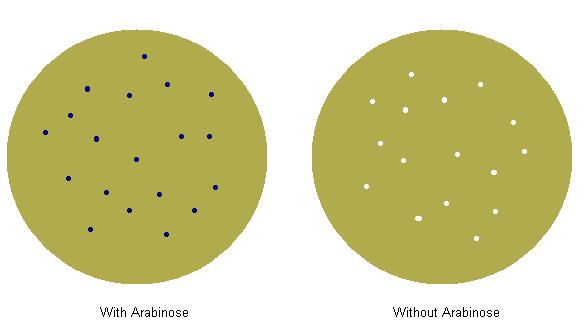Team:UC Berkeley/ProjectOverview
From 2008.igem.org
|
|
Overall project
Our project, dubbed Lysophonix, is centered around the creation of composite parts that will cause E. coli to lyse in response to a sound stimulus. We hope to demonstrate the utility of this sound lysis device in three distinct applications: protein purification, the Gateway reaction, and composite part assembly. Current methods of protein purification abrasively disrupt the bacterial membrane, often damaging or destroying the protein of interest. We seek to show that our device can be used as a gentler alternative to release proteins from E. coli. The other two applications, the Gateway and Assembly reactions, involve passing a specific genetic sequence, often called a "part," from one plasmid to another. These processes generally require the isolation of both plasmids of interest from the E. coli in which they are amplified and the addition of somewhat costly reagents. In each case, we propose bringing together two bacterial cultures, each containing our sound lysis device and one of the necessary plasmids, that together produce all of the reagents required for the reaction. When a sound stimulus is applied, the bacteria release the plasmids and reagents into the surrounding solution and the desired reaction ensues. This promises to both simplify and reduce the costs for Gateway and Assembly reactions.
Experiments
1: Testing Individual Composite Parts
1.1: Prepro Parts
{promoter}{rbs}{prepro}{phoA}{term}
We made parts of the format {promoter}{rbs}{prepro}{phoA}{term}. The promoter we used was {pBad}, and we tried 3 different ribosome binding sites with each prepro. We plated the bacteria we transformed on two plates, both with p-nitrophenyl phosphate, but one had arabinose and one did not. We screened successful rbs/prepro combinations by looking for combinations which caused blue colonies on the plate with arabinose and white colonies on the plate without arabinose. In preparation for later composite parts, we made sure that the {rbs}{prepro} part was an intermediate when making our construction tree.
1.2: Promoters
1.2.1 Growth-dependent Promoter
{promoter}{rbs}{GFP}{term}
intermediate: {rbs}{GFP}{term}
Make parts of the format {promoter}{rbs}{GFP}{term}, where we want to make the last three, {rbs}{GFP}{term}, into one part and test the different OD dependent promoters: hns, spv, bolA, ftsAZ, ftsQ, rrnB P1, and Ptet (as a positive control, which we already have). As a negative control, we will have no promoter.
The experiment involves diluting saturated cultures and growing them at 37 C, take out at the different time points and test the fluorescence to determine at what OD they start to turn on.
1.2.2 Sound-dependent Promoter
{Psound}{rbs}{GFP}{term}
Make parts of the format {Psound}{rbs}{GFP}{term}. Grow in culture and apply sound for 30 min. Then measure fluorescence.
1.3: Amplifier
{Pbad}{spvR}{Pspv2}{rbs}{GFP}{term}
{Pbad}{rbs}{GFP}{term}
intermediates: {spvR}{Pspv2}
{rbs}{GFP}{term}
Make parts of the format {Pbad}{spvR}{Pspv2}{rbs}{GFP}{term}, where {spvR}{Pspv2} is a composite part, and {rbs}{GFP}{term} is a composite part. For the control, we will have {Pbad}{rbs}{GFP}{term}. We will grow the culture to mid-log, induce w/0.2x arabinose and measure the fluorescence after 1 hour. From this, we will determine how many folds the signal was amplified.
1.4: Ligase
{Ptet}{rbs}{ligase}{term}
{Ptet}{rbs.ligase}{term}
Make parts of the format {Ptet}{rbs}{ligase}{term}, where {Ptet}{rbs} is a composite part(which we already have). We will also make {Ptet}{rbs.ligase}. Over-express ligase, lyse cell, and use 1 ul of cell lysate to ligate 2 purified DNA fragments.
1.5: Lysozyme, holin, antiholin
{promoter}{part}{S-tag}{term}
Assay for expression of lysozyme, holin, and antiholin. We will want to make measurements of expression levels to collect data for the modeling component, so we will want to use a variety of promoters. Assay will be done using the S-tag.
2: Testing if Protein can be Transported to the Periplasm
2.1: PhoA
{Pbad}{rbs}{prepro>}{<part>}{<phoA!}{term}
{Pbad}{rbs}{prepro>}{<part>}{<phoA!}{term}. The {rbs}{prepro>} composite part will have the following varients: {rbs}{prepro>}, {rbs~}{a~prepro>}, and {rbs.prepro>}. Note that we will already have the {<phoA!}{term} from the testing of individual prepro parts. The parts that we want to test in this system are: xis, int, ihfA, ihfB, Cre, ligase, BamHI, BglII. See if bugs turn yellow(?) when you induce Pbad. Similar to prepro testing experiments. We may need a {GS linker} between the part and PhoA to have a higher chance of correct folding occurring.
2.2: Deoxycholic Acid to Remove Outer Membrane
{pBad}{rbs}{prepro}{part}{term}
{pBad}{rbs}{prepro}{part}{S-tag}{term}
If the PhoA experiment to test protein transport to the periplasm gives a negative, that does not mean the protein was not transported - the protein may have had side reactions with the PhoA protein. At that point, we will split the parts we are trying to assay into two groups. BamHI, BglII, ligase, and cre can be linking directly to the prepro and assayed for after dissolving the outer membrane, giving parts of the format {pBad}{rbs}{prepro}{part}{term}. xis, int, ihfA, and ihfB will be linked with an S-tag we will by tagging the protein with the S-tag, giving {pBad}{rbs}{prepro}{part}{S-tag}{term}. After inducing our bacteria with arabinose, we remove the outer membrane with deoxycholic acid, and then assay for actvity of the S-tag.
3: Expression of proteins in cytoplasm
{promoter}{rbs}{part>}{<S-tag!}{term}
Results
Results to come sometime
 "
"
